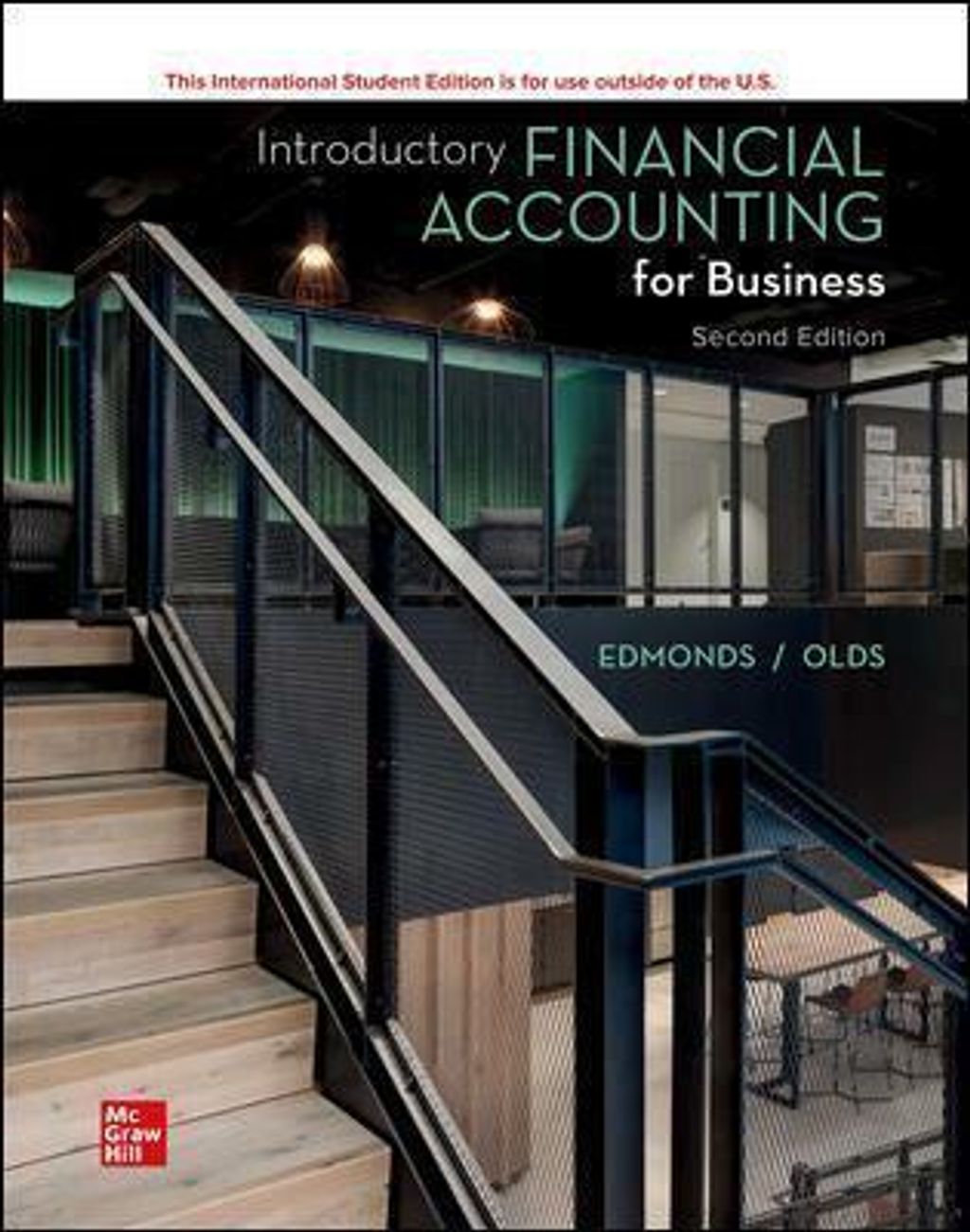
ISE Introductory Financial Accounting for Business 2E Christopher Edmonds / Philip Olds 9781260575309
TITLE : Introductory Financial Accounting for Business - Christopher Edmonds / Philip Olds
ISBN13 : 9781260575309
PUBLISHER : MCGRAWHILL (2020)
EDITION : 2ND ISE PAPERBACK
PAGES : 775 COLOR PAGES
Learning Financial Accounting can often feel like learning a foreign language to students. Before students even grasp the underlying concepts of Accounting, they are immersed in unfamiliar terms, and before students fully realize the purpose of financial statements, they are asked to make detailed recording procedures. This early emphasis on terminology and recording can be a struggle for non-accounting majors to see the relevancy, leading to increased dropouts and higher failure rates. This creates a challenge for Financial Accounting instructors, who must balance the need to engage and retain non-majors while fully preparing Accounting majors for the next level.
The authors of Introductory Financial Accounting for Business offer a solution emphasizing an analytical approach to Accounting - teaching students to think like business professionals and speak in terms of bottom-line consequences: How will a given transaction impact my overall business? How can I make better business decisions whether I'm an accountant, manager, or entrepreneur?
Business leaders are demanding that new graduates have these critical thinking skills in order to handle a rapidly changing modern business environment. Today's students will encounter new technological advances in automated data capture, data analytics, and artificial intelligence - processes that are automating traditional recording procedures. Rather than tallying transactions, students will be required to analyze and interpret data, making decisions early and often and thinking like business professionals. The Edmonds/Olds team's fresh approach and modern pedagogy helps prepare students for their business careers.
Table of contents
Chapter 2: Accounting for Accruals
Chapter 3: Accounting for Deferrals
Chapter 4: Accounting for Merchandising Businesses
Chapter 5: Accounting for Inventories
Chapter 6: Internal Control and Accounting for Cash
Chapter 7: Accounting for Receivables
Chapter 8: Accounting for Long-Term Operational Assets
Chapter 9: Accounting for Current Liabilities and Payroll
Chapter 10: Accounting for Long-Term Debt
Chapter 11: Proprietorships, Partnerships, and Corporations
Chapter 12: Statement of Cash Flows
Chapter 13: The Double-Entry Accounting System
Chapter 14: Financial Statement Analysis (Available online in Connect)
Appendix A: Accessing the EDGAR Database through the Internet
Appendix B: Portion of the Form 10-K for Target Corporation
Appendix C: Summary of Financial Ratios
Appendix D: General Ledger Capstone Project
Appendix E: Capstone Financial Statement Analysis and Annual Report Projects
Appendix F: Accounting for Investment Securities
Appendix G: Time Value of Money
Appendix H: Big Data and Data Visualizations Overview
Appendix I: Chart of Accounts
![ES EXTENSTION TRADING www.1tobuy.com [1TO BUY]](https://cdn.store-assets.com/s/406307/f/7859603.png?width=350)